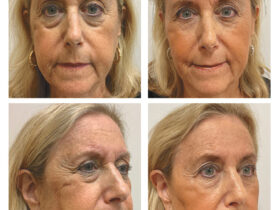Helps with Early Detection of Cancer
– By Southwest Medical Thermal Imaging –
 Digital infrared thermal imaging (DITI) or thermography is a non-invasive, radiation free clinical imaging procedure for detecting and monitoring a number of diseases and physical injuries by showing the thermal abnormalities present in the body. DITI is wholly unique in that it is a test of physiology and function, not of anatomy or structure, and has been used extensively in human medicine in the U.S.A., Europe and Asia for the past 20 years as a useful and economic tool in preventative health screening and adjunctive diagnostic modality.
Digital infrared thermal imaging (DITI) or thermography is a non-invasive, radiation free clinical imaging procedure for detecting and monitoring a number of diseases and physical injuries by showing the thermal abnormalities present in the body. DITI is wholly unique in that it is a test of physiology and function, not of anatomy or structure, and has been used extensively in human medicine in the U.S.A., Europe and Asia for the past 20 years as a useful and economic tool in preventative health screening and adjunctive diagnostic modality.
Thermography is a test of the Sympathetic Function and the body’s ability to respond to or react to pain, pathology or dysfunction anywhere in the body. The sympathetics, as part of the Autonomic Nervous System, are responsible for our fight or flight reactions and sexual response, but their main function is regulation of our core body temperature. This regulation is achieved by the vasoconstriction or vasodilation of micro dermal blood vessels to either conserve or dissipate heat. This process keeps our skin surface temperature about a degree to a degree and a half cooler than our core body temperature.
How Thermography Detects Injury or Disease
A healthy normal body will be thermally symmetrical, with similar temperatures and patterns throughout. All structures in the body are innervated and all nerve tissue has a percentage of sympathetic fibers that play a role in our body’s thermoregulation. The structure of our spinal cord is comprised of 31 pairs of nerve roots, 8 cranial, 12 thoracic, 5 lumbar, 5 sacral and 1 coccygeal. These nerve roots branch outward from the spinal cord to contralateral comparative areas. There are areas of skin that correspond and relate to every structure (organs, bones, tendons, etc.) in the body and this provides thermography with the opportunity to detect injury, disease or developing pathology anywhere in the body. Temperature asymmetries equal dysfunction and this allows us to use the body as its own control.
Skin surface temperatures are measured by specialized infrared detectors and then graphically displayed on a computer screen in a colorized image called a Thermograph. Whether or not a temperature differential or asymmetry is clinically significant or indicative of an underlying pathology is determined by the reviewing physician through visual interpretation and sophisticated computer software.
Invaluable Tool in Early Detection of Breast Cancer
DITI has proven to be an invaluable tool in the early detection of breast disease. Thermography’s role in breast cancer and other breast disorders is to help in the early detection and monitoring of abnormal physiology and the establishment of risk factors for the development or existence of cancer.
Unlike other standard diagnostic testing for breast disease, thermography is not limited to the area of tissue compressed between plates. All angles of the breast are imaged including the brachial plexus, where the neck joins the collar bone, the axillae and the area of skin just below the breast. These are important areas of interest as they are the most likely locations for vascular and lymphatic activity, indicators of developing pathology.
Angiogenesis, the formation of new blood vessels, has been deemed an important new prognostic indicator in early stage breast carcinoma according to the Journal of Clinical Oncology. The development of these vessels to “feed” the growth of a tumor emits heat generating nitric oxide as a by-product, easily detected by thermography as a thermal asymmetry or abnormality.
Early Intervention and Better Treatment Opportunities
Thermography has the ability detect changes years before standard structural testing resulting in early intervention and providing better treatment opportunities, the capacity to monitor treatments and ensuing better outcomes.
Thermography is a beneficial overall tool in preventative health with applications in stroke screening determining arterial inflammation and assessing pulmonary & cardiac function. DITI is the only method available to visualize pain and pathology and is a useful aid in the diagnosis of Reflex Sympathetic Dystrophy, Nerve Damage, Fibromyalgia, and Unexplained Pain.
DITI has been recognized as a viable diagnostic tool since 1987 by the AMA Council on Scientific Affairs and the ACA Council on Diagnostic Imaging, the Congress of Neurosurgeons in 1988 and in 1990 by the American Academy of Physical Medicine and Rehabilitation. Incorporation of Medical DITI into your healthcare regime can offer considerable financial savings by avoiding the need for more expensive investigations and can provide useful additional information related to physiology and function that is outside the range of standard diagnostic testing.
Think Thermography First
Often the use of Medical DITI as an initial diagnostic tool can result in considerable financial savings by avoiding the need for more expensive and invasive investigations. To learn more, please call Southwest Medical Thermal Imaging at 239-949-2011, or visit us online at www.thermalclinic.org.









